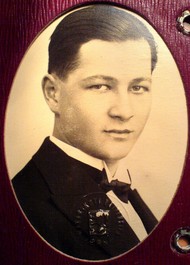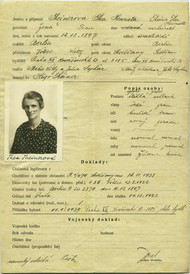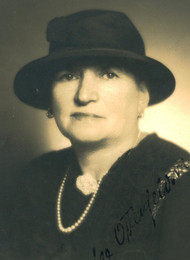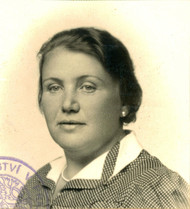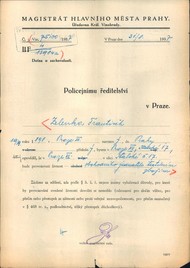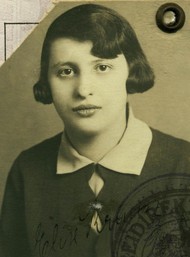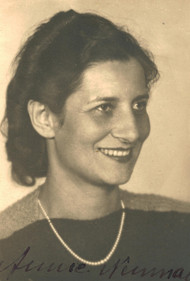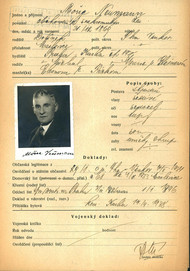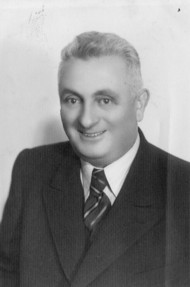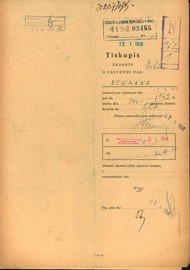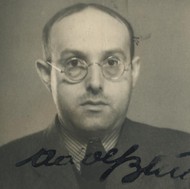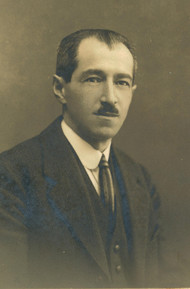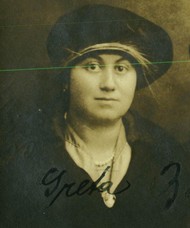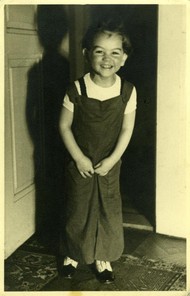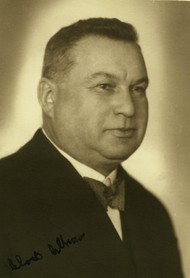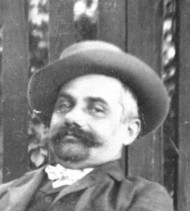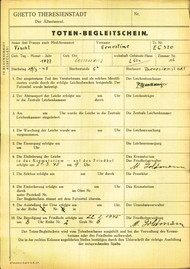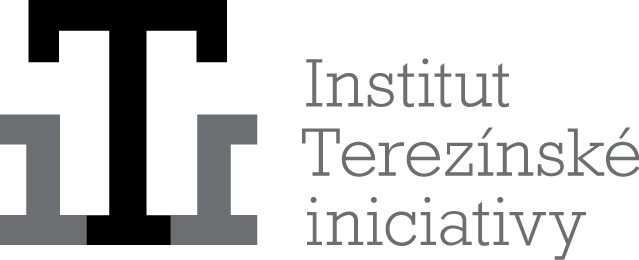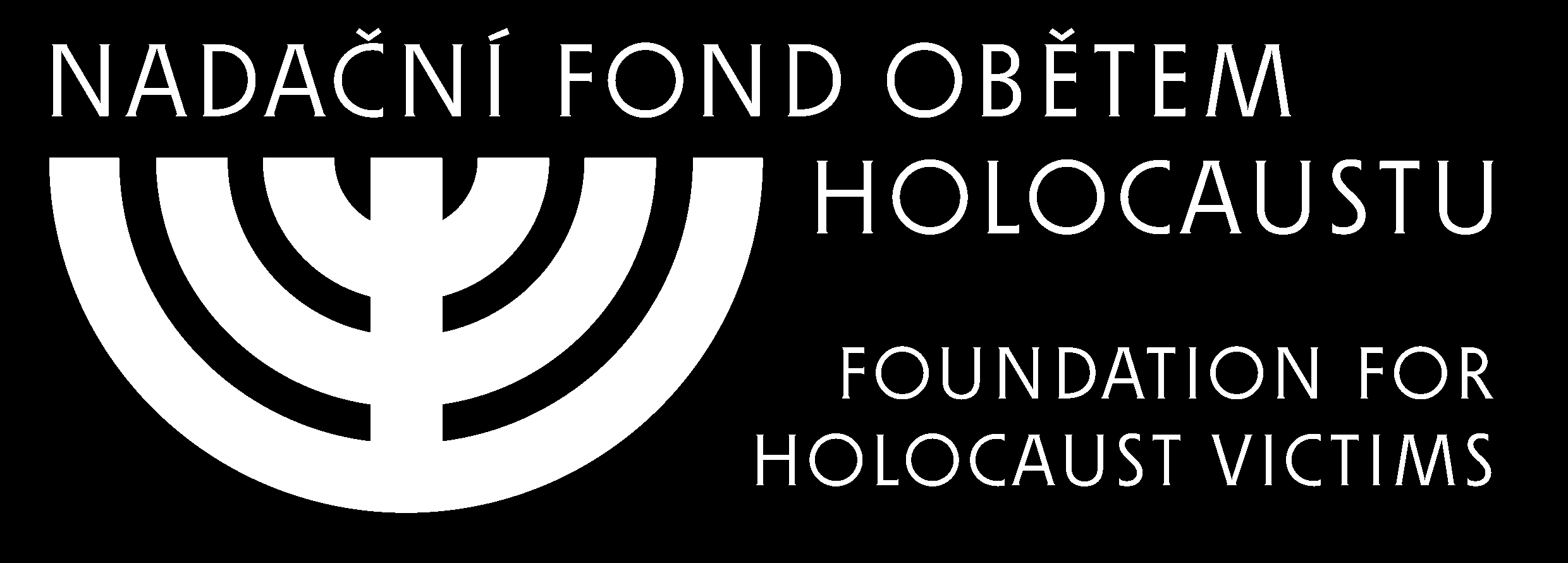Key and copyright. (In Czech)
Before the start of the war, 34% of Łódź's 665 000 inhabitants (223 ,000 people) were Jewish, and the city was an important centre of Jewish culture. The arrival of German troops on the 8th of September 1939 meant the start of a campaign of terror against the Jewish and Polish inhabitants of the city. In February 1940, the creation of a Jewish ghetto on the northern edge of the city, in the former Jewish poor quarter, was announced. Jews were driven out of the other parts of the city, and on the 30th of April, the territory of the ghetto was closed off. 164 000 Jews from Łódź had to squeeze into an area of four square kilometres, of which over a third had no building on it. In 1941 and 1942, a further 38 500 Jews were deported to the ghetto, 20 000 of whom came from the Reich and the Protectorate of Bohemia and Moravia, the rest from nearby towns.
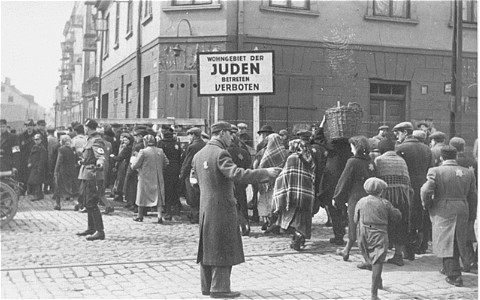
A Jewish policeman and a German soldier direct traffic in the street that marks the start of the Jewish ghetto. The sign says „Wohngebiet der Juden. Betreten verboten.“ („Jewish quarter. No entrance.“). (Photo: Zydowski Instytut Historyczny Instytut Naukowo-Badawczy, courtesy of USHMM Photo Archives)
In November 1941. 5 000 Roma from Burgenland (including many children) were deported to the ghetto. They were interned in a special section of the ghetto, separated off by double barbed wire.
The Jewish administration of the ghetto, led by the dominant figure of Mordechai Rumkovski, tried to ensure that labour productivity in the ghetto was as high as possible, and that all prisoners capable of working were doing so to the maximum. Not even this however could prevent the overcrowding and starvation, and improve the utterly inhuman living conditions of the Łódź prisoners. Epidemics, fuel and food shortages and inadequate sanitation led to the fact that some 43 500 people, 21 % of the ghetto's population, died of malnutrition, cold and disease.
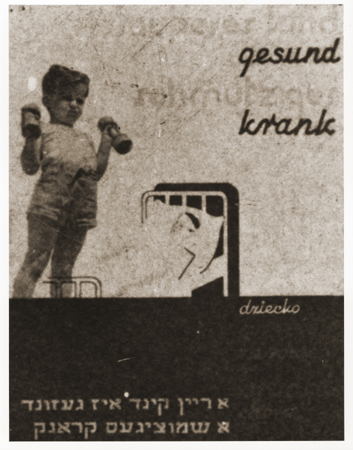
A poster issued by the Jewish administration of the Łódź ghetto, calling for children's hygiene to be maintained. (Photo: Muzeum Sztuki w Lodzi, courtesy of USHMM Photo Archives)
From January 1942 on, deportations flowed from the ghetto to nearby Chełmno, where prisoners were killed in mobile gas chambers. By May 1942, 55 000 Jews and 5 000 Roma temporarily interned in Łódź had been murdered. In the second wave of deportations in September 1942, almost 20 000 prisoners were murdered, mostly children, old people and the sick. The whole operation started with the closing of the hospital, whose patients became the first victims. From September 1942 on, the ghetto became one large factory, and the prisoners were forced to work for the German war economy. At the beginning of 1944, the Germans decided to close the ghetto. In the summer of 1944, the remaining prisoners were sent to extermination camps in Chelmno and Auschwitz.
Between the 16th of October and the 3rd ofNovember 1941, 5 000 Czech Jews were deported to Łódź. Only 277 of them survived.
-
See also:
-
Testimony of Mrs. V.A., born. 1903, and her daughters E. J., born. 1927, and V. Š., born. 1928. Deported from Prague to Łódź, later to Auschwitz, Bergen-Belsen, Magdeburg, death march. (In Czech)
-
Links:
-
Literature:
-
Seemann, Richard. Ghetto Litzmannstadt, 1941-1944. Dokumenty a výpovědi o životě českých židů v lodžském ghettu (Das Litzmannstädter Ghetto, 1941-1944. Dokumente und Zeugenaussagen betreffend das Leben der tschechischen Juden im Łódźer Ghetto). Praha: U?stav mezina?rodni?ch vztahu? ve spolupra?ci s Terezi?nsky?m pama?tni?kem, 2000. 307 s.
-
Seemann, Richard. Čeští Židé v Lodži. Terezínské studie a dokumenty. 1998, s. 67-85.
-
Dobroszycki, Lucjan. The Chronicle of the Łódź Ghetto 1941-1944 (Eine Chronik des Łódźer Ghettos). New Haven - London: Yale University Press, 1984. 551 s.
-
Barkai, Avraham. Between East and West. Jews from Germany in the Lodz Ghetto (Zwischen Osten und Westen. Juden aus Deutschland im Łódźer Ghetto). Yad Vashem Studies. 1984, s. 271-332.
-
Kovályová, Heda. Na vlastní kůži (Am eigenen Leib). Praha: Československý spisovatel, 1992. 331 s.
-
Kafka, František. Krutá léta (Die grausamen Jahre). Praha: Naše vojsko - SPB, 1963. 405 s.


